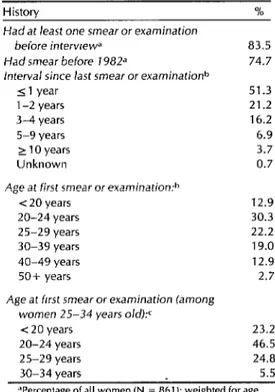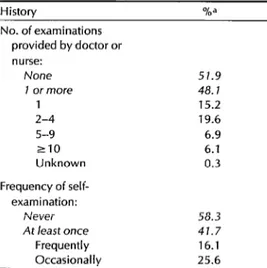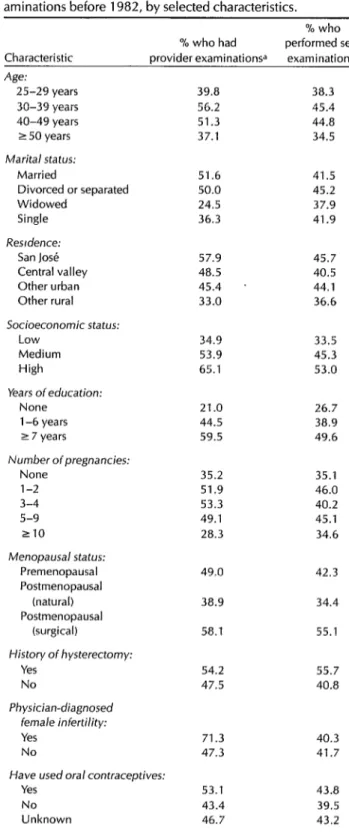Screening practices for cervical and breast cancer in Costa Rica
Texto
Imagem




Documentos relacionados
In addition, the methodology to obtain a number of folow-up indicators from the SISCOLO raw data and the Brazilian guidelines for cervical cancer screening and their visualization
The following characteristics and indicators of Siscolo were selected to evaluate cervical cancer screening: proportion of tests performed per year and age group; ratio
We included trials that evaluated breast cancer screening with mammography, self examination, or clinical examination; colorectal cancer screening with sigmoidoscopy or
Based on the experience of countries with effectively organized screening programs, a decision was made in 2006 by the Minister of Health to nominate a group of experts to prepare
might become cancerous, (5) to evaluate the impact of the program on morbidity and mortality from cervical cancer, (6) to com- pare the effectiveness of a
Therefore, Pap smears done in the Family Islands have to be transported to Nassau to be read, frequently resulting in substantial delays in obtaining
A handbook, Cervical Cancer Screening: An Introduction for Health Work- ers in the Caribbean, was produced by the project, and two videotapes-“Taking Cer- vical
In sum, while regional differences in the quality of the screening process are pos- sible or even probable, it appears that the main factors producing marked

